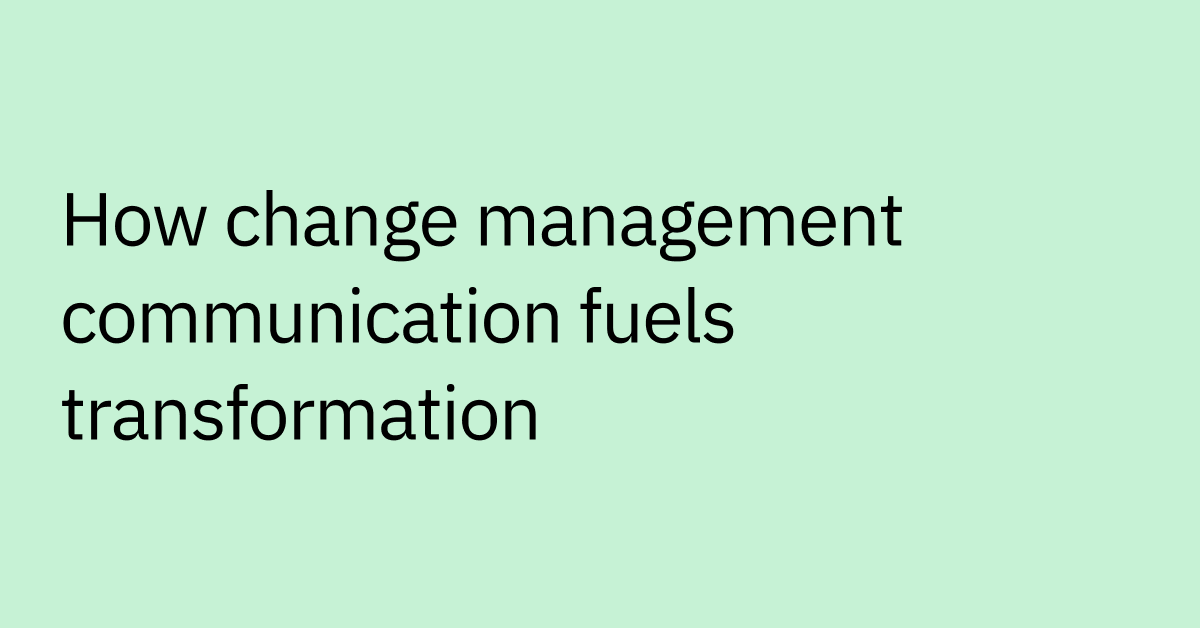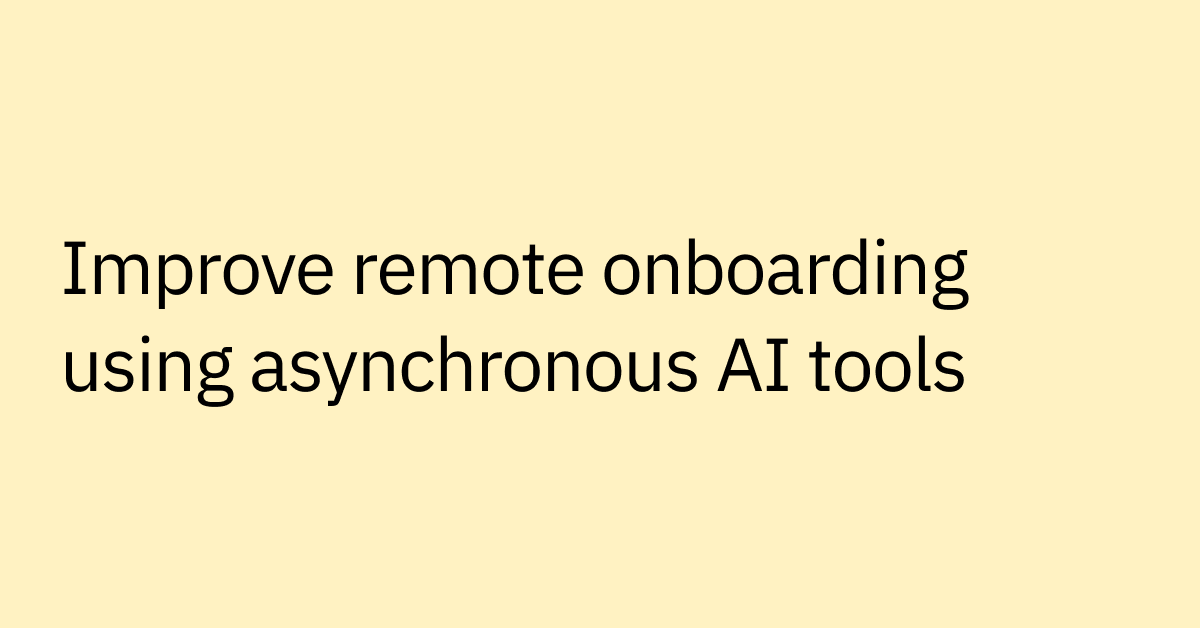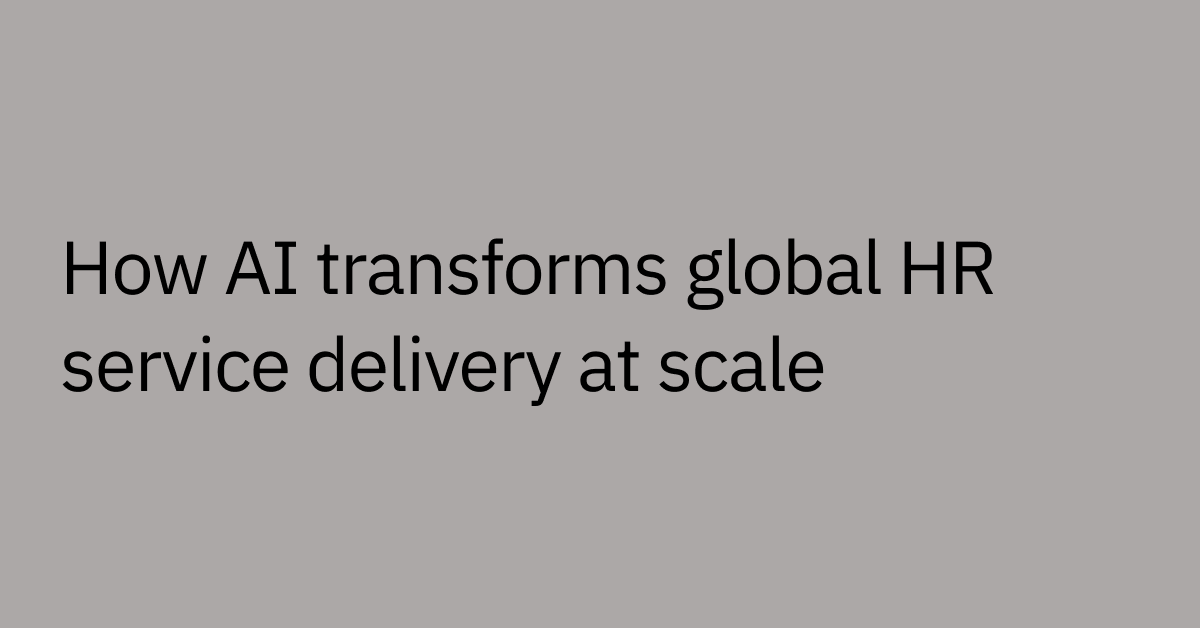Table of contents
The IT landscape is evolving rapidly, with artificial intelligence leading the charge.
One area experiencing significant AI-driven innovation is IT operations analytics (ITOA). AI-powered solutions enable IT teams to monitor systems more efficiently and proactively predict and prevent problems.
In this post, we'll explore how AI is transforming IT operations analytics (ITOA) and the benefits AIOps bring. We'll look at real-world examples of AI in action and discuss insights that will help you capitalize on this technology.
Here's a preview of what we'll answer:
- What is IT operations analytics, and why is it important?
- What are the critical applications for IT operations analytics?
- What benefits of AIOps?
- What are real-world examples of AIOps?
- What are the challenges of implementing IT operations analytics?
- How is AI transforming IT operations analytics?
What is IT operations analytics (ITOA)?
IT operations analytics (ITOA) refers to collecting, analyzing, and leveraging data from across the IT environment to optimize performance, enhance decision-making, and proactively identify or prevent issues.
With increasingly complex IT ecosystems, there's a growing need to monitor and derive meaning from the sheer volume of data produced by diverse hardware and software systems. This is where ITOA comes in. It provides visibility into key performance indicators, trends, and anomalies to maximize uptime, streamline maintenance, and enable smooth IT operations.
ITOA is not a one-size-fits-all approach. Organizations use varying tools and techniques, from basic log analysis to sophisticated machine learning algorithms, to gain actionable insights from their IT data. At its core, ITOA powers proactive IT management by equipping teams with the intelligence to tackle operational challenges effectively. It forms the backbone of data-driven, efficient IT ops.
Why is ITOA important?
IT operations analytics (ITOA) has become a crucial element of modern IT management. But why has it emerged as such a vital capability? Let's explore some key reasons ITOA is essential for today's tech-driven world.
- Boosts IT system resiliency: With intricate, interconnected IT ecosystems, manual monitoring is ineffective. ITOA automates the process of tracking these complex systems. It enables teams to rapidly detect and resolve issues to minimize downtime. This results in more robust and reliable IT operations.
- Provides in-depth visibility: ITOA offers invaluable visibility into performance metrics and trends across the IT environment. Collecting and analyzing operational data delivers a comprehensive picture of tech health and efficiency. This approach empowers strategic optimizations and planning.
- Drives proactive incident management: Traditional IT monitoring is reactive, addressing problems only after they arise. ITOA allows teams to avoid issues by predicting and preventing them before they escalate, reducing disruptions and enhancing the end-user experience.
- Optimizes resources and costs: ITOA helps identify ways to allocate resources more efficiently by analyzing usage trends and system demands. This allows organizations to optimize budgets and realize long-term cost savings.
- Secures infrastructure with compliance in mind: ITOA enables rapid detection and response to potential security threats and compliance gaps, including spotting unusual activities, shoring up vulnerabilities, and adhering to regulations.
As systems grow more complex, it becomes even more critical for harnessing data-driven insights. And ITOA is a must for adaptive, efficient, and secure modern IT management.
How does IT operations analytics fit in modern IT operations?
ITOA has become a critical capability for managing complex, interconnected IT environments. It delivers key benefits, such as:
- Consolidating data across diverse systems for centralized monitoring and management to provide complete visibility into IT operations.
- Enabling predictive analytics to identify and prevent issues proactively. Teams can tackle problems before they cause disruptions.
- Supporting data-driven decision-making for resource optimization, efficient innovation, and successful digital transformations.
- Building resilience by offering real-time insights into IT health and risks. Teams can rapidly respond to adversity and mitigate downtime.
ITOA is now an essential element of modern IT ops. It is a multifaceted tool for mastering complexity, harnessing AI, ensuring efficiency, and enabling innovation. As IT environments evolve, ITOA will remain a foundational capability keeping operations resilient.
Key applications for IT operations analytics
ITOA has become a critical capability for managing complex, interconnected IT environments. It delivers key benefits, such as:
- Consolidating data across diverse systems for centralized monitoring and management to provide complete visibility into IT operations.
- Enabling predictive analytics to identify and prevent issues proactively. Teams can tackle problems before they cause disruptions.
- Supporting data-driven decision-making for resource optimization, efficient innovation, and successful digital transformations.
- Building resilience by offering real-time insights into IT health and risks. Teams can rapidly respond to adversity and mitigate downtime.
While ITOA delivers powerful capabilities across these key areas, artificial intelligence takes IT operations analytics to an entirely new level. This is where AIOps comes into play. AIOps supercharge ITOA by applying advanced machine learning and analytics technologies to IT operations data.
The benefits of AIOps
AIOps (Artificial Intelligence for IT Operations) refers to machine learning and other advanced analytics technologies applied to IT operations data, such as system logs, performance metrics, and ticket data. The goal of AIOps is to improve monitoring, automation, and service desk functions by enabling constant insights into IT infrastructure health and performance.
Implementing AIOps tools can profoundly improve IT management. At Moveworks, our Employee Experience Insights (EXI) solution has delivered tremendous value across our customer base — and our own IT operations.
Here are some real-world examples of ITOA benefits we’ve experienced firsthand:
- Ready-to-use analytics: AI-powered ITOA delivers detailed insights immediately with no complex setup needed, unlike traditional ITSM analytics.
- Strategic planning: AI evaluates task impact and urgency to aid planning and prioritization of projects, optimizing resource allocation.
- Automation opportunities: AI summaries help pinpoint processes to automate, reducing manual work while sustaining performance.
- Pattern recognition: AI spots issue patterns not visible to humans, enabling proactive process optimization.
- Industry benchmarking: AI enables comparing metrics against top performers to gauge standing.
- Enhanced reporting and leadership alignment: AI provides visibility into metrics to set informed goals and communicate insights to leadership.
Additional advantages of AI-powered ITOA:
- Holistic visibility into IT operations
- Streamlined, insight-driven decision-making
- Minimized downtime and disruptions
- Improved resource optimization
- Faster troubleshooting and issue resolution
- Proactive identification and prevention of problems
- Smoother IT operations and user experience
- Fine-tuned system and application performance
- Mitigated risks from IT changes
- Quick resolution of common issues
With this multitude of benefits, it’s clear why ITOA is becoming integral to IT success. As AI capabilities grow, ITOA will continue revolutionizing tech infrastructure management.
Real-world use cases of AIOps
Moveworks’ Employee Experience Insights (EXI) demonstrates the immense power of AI to revolutionize IT operations analytics (ITOA). Through advanced capabilities like natural language processing and machine learning, EXI unlocks transformative insights from IT data — showcasing the future of AI-driven ITOA.
Enable faster time-to-value with out-of-the-box AI analytics
Traditional ITSM analytics often require complex setup and ongoing maintenance of dashboards. But AI-powered ITOA solutions like EXI deliver ready-to-use analytics out of the box.
Previously, Luminis Health spent hours tinkering with ITSM dashboards to derive insights. With EXI, they gained more granular intelligence immediately with no complex configuration needed.
By providing detailed insights without the typical overhead, EXI enabled Luminis to:
- Shorten time-to-value and start optimizing processes faster
- Shift focus to improving experiences rather than building dashboards
- Access a broader range of analytics not available in legacy tools
Ready-to-use AI-powered ITOA solutions eliminate the barriers of complex setup and maintenance. Organizations can tap into impactful insights quicker, accelerate optimizations, and focus resources on high-value initiatives. The future of ITOA is ready and waiting.
Power strategic IT planning with AI-driven ITOA
Determining which projects to prioritize in increasingly complex IT environments can be challenging. However, organizations can gain invaluable insights to guide strategic planning by combining IT operations analytics (ITOA) with AI.
Take the example of Intercontinental Exchange (ICE). ICE leveraged EXI to unlock intelligence from unstructured ticket data. This revealed where employees faced the most pressing issues.
EXI uses AI to condense thousands of unique issues, summarizing them in an aerial view of opportunities to proactively improve processes or prevent problems. Once an issue category was identified, EXI enabled ICE’s IT leaders to drill down and find the root cause with a granular analysis of specific issues and personas in real time.
With these insights, ICE gained complete visibility into organizational pain points, enabling continuous service improvement via strategic prioritization of the most impactful initiatives, such as:
- A group of employees with 5x longer time-to-resolution
- 3 apps taking over 12 hours to provision
- Outlook as the top pain point
- Laptop issues requiring over 20 hours to fix
At ICE, AI-powered ITOA solutions like EXI transform IT planning from guesswork to data-driven decision-making. Organizations can allocate resources precisely where they will have the most significant impact. ITOA and AI together offer immense value for strategic optimization.
Pinpoint opportunities for automation with ITOA that understands language
Understanding and improving employee experiences is crucial yet challenging. However, organizations can gain unprecedented visibility by combining IT operations analytics (ITOA) with AI and natural language processing. Albemarle experienced this firsthand with Moveworks' Employee Experience Insights.
By analyzing unstructured information — in a dozen different languages — across ticket data, EXI's natural language capabilities revealed the real problems impairing employees across various apps and services. This way, Albemarle could view and measure the service experience, diving deep into any app, discern its high-level experience state, filter specific ticket subsets, and analyze the underlying data.
With these insights, Albemarle achieved:
- Rapid identification of major workplace disruptions
- 2X faster average resolution times
AI-powered ITOA solutions like EXI optimize employee experiences by tapping into natural language to precisely target needed improvements.
Enable proactive support through AI pattern recognition
AI is transforming ITOA through advanced pattern recognition capabilities. By detecting obscure issues and trends, AI enables proactive optimization of processes and experiences.
For example, EXI compares performance over time to derive insights driving experience changes. It helped one finance company complete reporting 30X faster by finding patterns in their data.
Previously limited by manual bandwidth, this company leveraged AI pattern recognition to:
- Identify key drivers of experience fluctuations
- Prioritize appropriate automation
- Expand reporting coverage and productivity
By revealing hidden patterns and tracking their impact on performance, AI-powered ITOA solutions like EXI facilitate continuous improvements. Organizations gain clear visibility to optimize processes and deliver better user experiences proactively. Rather than reactive firefighting, teams can get ahead of problems and plan strategic optimizations. AI pattern recognition unlocks this proactive, predictive approach.
Showcase AI-driven ITOA value with industry benchmarks
Benchmarking against peers is invaluable for quantifying IT improvements.
For example, Moveworks' own IT team leverages EXI’s insights to increase ticket resolution rates. By analyzing top requests, they created a suite of automations to resolve more tickets over time.
With these AI-powered ITOA capabilities, Moveworks aims to increase already high resolution rates by 10% and showcase EXI's ability to drive continuous improvement through comparative analytics.
Key benchmarking benefits include:
- Comparing metrics against top industry performers
- Monitoring returns on investments
- Identifying focus areas to match or exceed leaders
By benchmarking critical KPIs like time-to-resolution against peers, organizations gain expert perspectives on achieving world-class service delivery. Organizations can quantify progress and optimize processes to match industry leaders.
Enhance reporting and leadership alignment with AI-powered ITOA
Aligning IT teams and leadership is critical for improvement initiatives. AI-powered ITOA solutions like EXI can bridge this gap through data-driven insights.
One beverage manufacturer needed to enhance response times based on user feedback. They leveraged EXI's metrics tracking and analytics capabilities to identify areas to optimize.
With real-time visibility into KPIs, this company set informed performance goals and effectively communicated insights to leadership for the first time. Key results included:
- Unparalleled visibility into processes to improve the employee experience
- 80% faster average resolution within 6 months
AI-powered ITOA solutions enhance reporting and alignment. Organizations can leverage ITOA insights to set goals, demonstrate IT value, and drive continuous improvement.
What are the challenges of implementing ITOA?
While delivering immense value, implementing ITOA poses some key challenges:
- Data consolidation: Organizations must integrate disparate data sources into a unified ITOA solution. But, this demands careful coordination across IT teams and, potentially, other support teams, such as HR or Facilities.
- Data accuracy: Erroneous or outdated data can lead to misleading insights. Validating and maintaining data quality is crucial for reliable analytics.
- Skill gaps: ITOA solutions often require specialized expertise in data science, AI, and machine learning. Additional staff training or hiring may be needed.
However, with thorough planning and preparation, organizations can overcome these challenges. The long-term benefits of ITOA make this investment worthwhile. By addressing concerns proactively, teams can realize the full potential of ITOA and enable data-driven innovation.
How is AI changing ITOA?
AI has brought game-changing capabilities to IT operations analytics (ITOA), enabling a proactive, predictive approach to managing tech infrastructure. Here are some of the key ways AI is transforming ITOA:
- Sophisticated analytics: AI systems can rapidly analyze massive, complex datasets to uncover optimization opportunities, emerging risks, and other critical insights.
- Anomaly detection: By continuously analyzing infrastructure behavior, AI can instantly detect unusual activity indicative of a potential problem.
- Event correlation and root cause analysis: AI can instantly correlate events across the infrastructure to determine the root cause of performance issues or outages.
- Proactive support with chatbots and virtual assistants: AI-powered chatbots provide 24/7 support to end users, learning over time to deliver increasingly effective assistance.
- Predictive optimization: Analyzing past trends and infrastructure data, AI can forecast needs and optimize configurations preemptively to prevent bottlenecks.
- Enhanced security: Using techniques like machine learning, AI can identify attack patterns and unusual behaviors to detect threats early and mitigate risks.
The future of ITOA is AI
The IT landscape grows more complex by the day. Manual approaches to managing tech infrastructure are quickly becoming antiquated and ineffective. This is where AIOps come in.
AIOps can empower teams with unparalleled visibility and actionable insights by continuously collecting and analyzing data across the IT environment. Issues can be identified at inception and resolved instantly. Resources can be optimized dynamically to improve performance and reduce costs. The user experience can be fine-tuned to delight customers and employees.
In short, AIOps are enabling a paradigm shift — from reactive firefighting to predictive optimization. It lays the foundation for intelligent, self-running IT ecosystems that rapidly adapt to evolving needs.
AI takes ITOA to the next level, delivering unprecedented automation, accuracy, and real-time optimization. It enables a proactive, resilient approach to managing intricate IT environments.
But the future is AIOps. Organizations that embrace this approach will gain a distinct competitive advantage. They will be able to accelerate innovation, strengthen resilience, and harness technology to drive transformational outcomes. The time to adopt AIOps is now. Let your infrastructure run on autopilot, freeing your teams to focus on high-impact initiatives. The future of IT starts today.
Contact Moveworks to learn how AI can supercharge your workforce's productivity.



